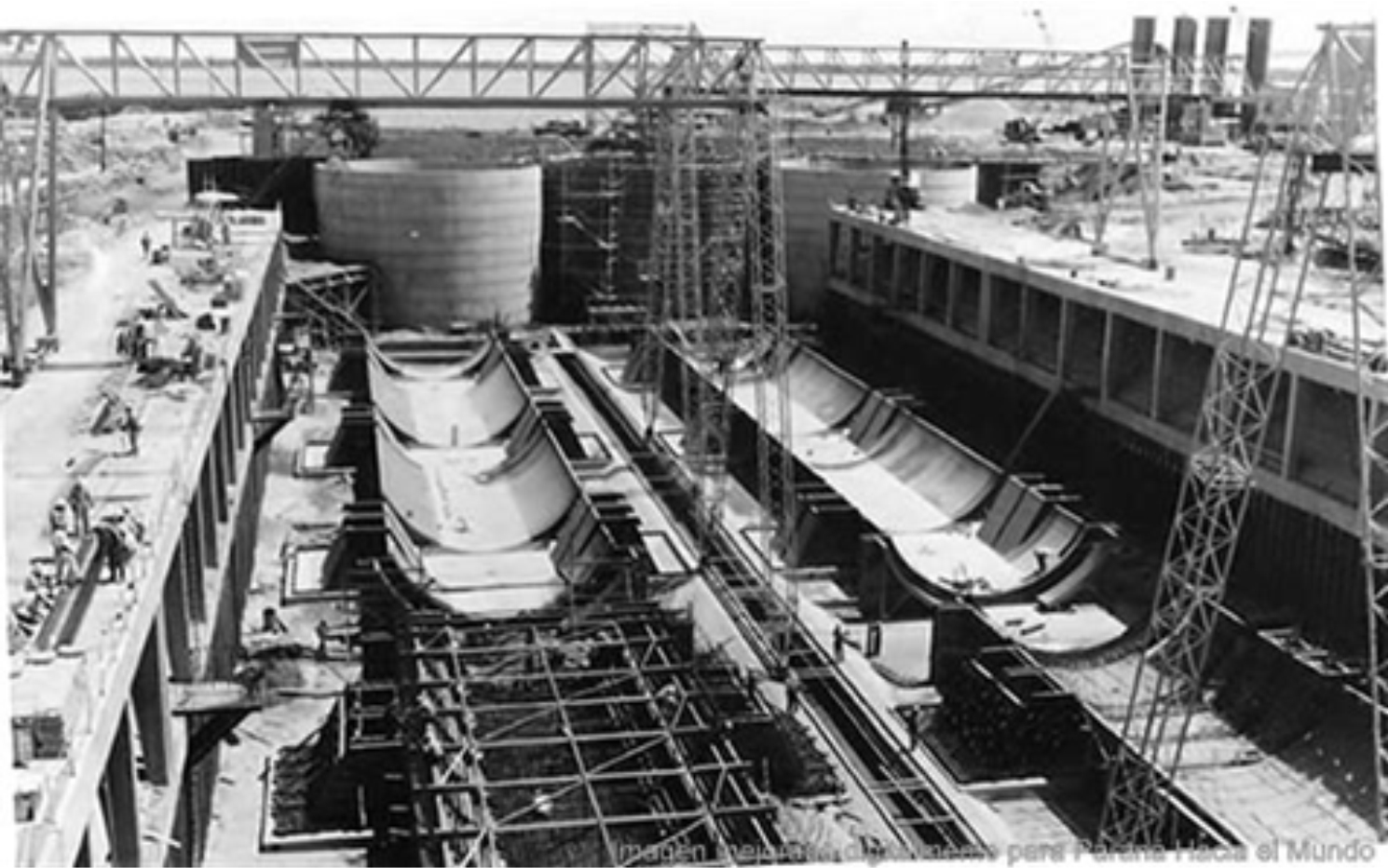Travel down the river
The subfluvial tunnel Paraná - Santa Fe (1969): engineering and architecture connecting territories
DOI:
https://doi.org/10.18861/ania.2021.11.1.3016Keywords:
developmentalist State, engineering, Argentina, Architecture for progress, Mesopotamian territory, Mario Robero ÁlvarezAbstract
In 1960, two Argentinian provinces (Santa Fe and Entre Ríos) historically separated by the Paraná River, signed a treaty to build a subfluvial tunnel. This would definitively end the isolation of the Mesopotamian region in this country. Projected, built and inaugurated (1969) within the framework of development policies, the “Uranga – Sylvestre Begnis” tunnel constitutes a technical, political and architectural milestone, as the result of an active State in the construction of the territory. In addition, just as the engineering scopes had enough merits to enter the history of great achievements, in architecture, high quality thresholds were also reached. This article aims to make visible the importance of the Subfluvial Tunnel in technical terms and highlight its architectural dimension. This is achieved by recognizing the performance of the studio of Mario Roberto Álvarez and associates as doers of the architecture that is integrated into what is ultimately an exceptional work, positioned in a prominent international level of disciplinary debate.
Downloads
References
Altamirano, C. (1998). Desarrollo y desarrollistas. Prismas, revista de historia intelectual(2), 75-94.
Álvarez M. R. (1972). Estudio Mario Roberto Álvarez y asociados, Nuestra Arquitectura nº 477, pp. 63-66.
Álvarez M. R. (1974). Arquitecto Mario Roberto Álvarez y asociados, Summa 80/81.
CAI, (. (1981). Historia de la ingeniería argentina. Buenos Aires: Centro Argentino de Ingenieros.
Camarda Medina, M., & Oviedo Correo, J. A. (2017). Las políticas públicas, el túnel subfluvial entre Paraná y Santa Fe y la integración física de la Megapotamia. Transporte y territorio, 222-245.
Camarda Medina, M. (2019) Conferencia. Jornadas de arquitectura e ingeniería. 50 años del Túnel Subfluvial. Paraná.
Costa, C. (2020) Folletos y boletines: instrumentos celebratorios de la arquitectura para el desarrollo. Presentación a XVI Jornadas INTHUAR - FADU - UNL.
De Marco, M. Á. (2016). El Túnel Subfluvial. Federalismo y desarrollo. Santa Fe: ediciones UNL.
García Bossio, H. (2014). ¿Qué nos hace más Nación? Desafíos del desarrollismo frondicista-frigerista. Lanús: EdUN La Cooperativa.
Kuchen, E. R. (2005) Túnel Subfluvial “R. Uranga – C. Sylvestre Begnis” Operación y mantenimiento. Informe técnico.
Liernur, J. F. (2001). Arquitectura en la Argentina del siglo XX. La construcción de la modernidad. Buenos Aires, Fondo Nacional de las Artes.
Liernur , J. F. y Aliata F. (2004). Diccionario de Arquitectura en la Argentina. Buenos Aires: AGEA.
Mele, J. (2004). Álvarez, Mario Roberto, en Liernur , J. F. y Aliata F. (2004). Diccionario de Arquitectura en la Argentina. Buenos Aires: AGEA.
Medina, J. (2019) Entrevista. 50 Años Túnel Subfluvial - Capítulo 9. Recuperado de:
https://www.youtube.com/watch?v=Sr7okMWLzD8&list=PLmXJX7PmqYiTcs5WHpnsLPLMJAo1eV4ti&index=2
Müller, L. (comp) (2009) La ciudad en blanco y negro. Memoria fotográfica de Santa Fe en el proceso de modernización urbana, UNL, Santa Fe.
Müller, L., & Costa, C. (2017). Vencer al río. Técnica, política e integración territorial en el caso del Túnel Subfluvial Hernandarias. Actas XVI Jornadas Interescuelas en Historia. Mar del Plata.
Shmidt, C. y Plotquin, S. (2014) Mario Roberto Álvarez. Buenos Aires, IAA FADU UBA - AGEA, pp. 128-130.
Uranga, L. (2019). Conferencia. Jornadas de arquitectura e ingeniería. 50 años del Túnel Subfluvial. Paraná.

Downloads
Published
Versions
- 2020-12-17 (4)
- 2020-12-17 (3)
- 2020-12-17 (2)
- 2020-12-17 (1)
How to Cite
Issue
Section
License

This work is licensed under a Creative Commons Attribution 4.0 International License.
The journal and its contents are licensed under the Creative Commons - Attribution 4.0 International License (CC BY 4.0). It is possible to copy, communicate and publicly distribute its content as long as the individual authors and the name of this publication are cited, as well as the publishing institution (Universidad ORT Uruguay).

